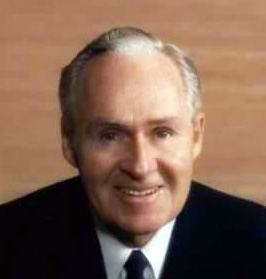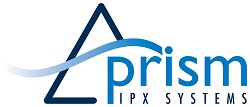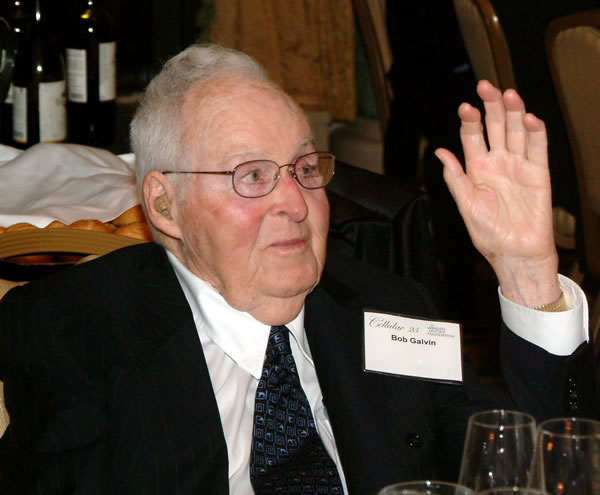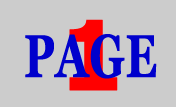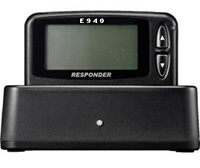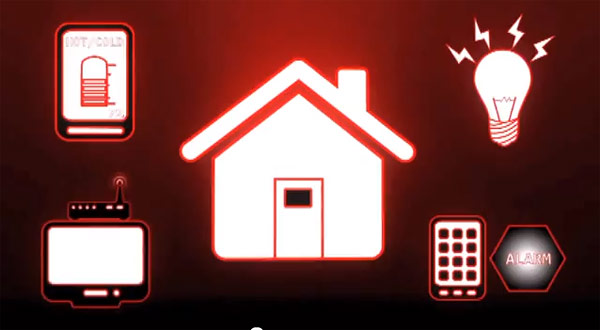 BloostonLaw Telecom Update Published by the Law Offices of Blooston, Mordkofsky, Dickens, Duffy & Prendergast, LLP [Reproduced here with the firm's permission.] www.bloostonlaw.com |
| Vol. 14, No. 37 | October 12, 2011 |
 USF/ICC Reform Order On Tentative Agenda For FCC’s Oct. 27 Meeting FCC Chairman Julius Genachowski has announced that the following items will be on the tentative agenda for the next open meeting scheduled for Thursday, October 27, 2011: - Connect America Fund/Intercarrier Compensation Reform: The Commission will consider a Report and Order and Further Notice of Proposed Rulemaking (FNPRM) to comprehensively reform and modernize the universal service and intercarrier compensation systems (see story in opposite column).
- Modernizing Television Broadcaster Requirement to Make Information Available to the Public: The Commission will consider an Order on Reconsideration of the 2007 Enhanced Disclosure Report and Order and an FNPRM proposing to replace television broadcast stations' public files with online public files to be hosted by the Commission.
- National Emergency Alert System Preparation Update: The Public Safety and Homeland Security Bureau will provide a brief update on the status of preparations for the national test of the Emergency Alert System to be held on November 9, 2011, at 2 p.m. EST.
BloostonLaw contacts: Hal Mordkofsky, Ben Dickens, Gerry Duffy, and John Prendergast. |
 INSIDE THIS ISSUE - Genachowski outlines FCC’s proposed USF/ICC order for vote at Oct. 27 meeting.
- Comment dates set for FCC’s NG911 rulemaking.
- D.C. Circuit selected to hear “Net Neutrality” cases.
- Richard Levie appointed Special Master in AT&T/T-Mobile court proceeding.
- Public Knowledge wants clarification of confidentiality treatment in merger proceeding.
|
Genachowski Outlines FCC’s Proposed USF/ICC Order For Vote At October 27 Meeting At FCC headquarters in Washington, D.C., last Thursday, FCC Chairman Julius Genachowski outlined key components in the Universal Service Fund (USF) and Intercarrier Compensation (ICC) Order that was circulated to the other Commissioners that same day. The FCC is expected to consider the item at its October 27 open meeting (see separate item in opposite column). Genachowski emphasized that the proposed Order “will not rubber stamp or adopt wholesale the proposals of any stakeholder or group of stakeholders.” Rather, he said, the proposed Order draws on elements from a number of proposals, including the joint proposals from the State Members of the Federal-State Joint Board on Universal Service, the rural local exchange carrier (RLEC) Plan, and the ABC Plan. According to the Chairman, the proposed Order will transition USF to a Connect America Fund (CAF), which will have two core goals: First, ensuring universal availability of affordable broadband to homes, businesses, and anchor institutions in unserved areas; and Second, ensuring universal availability of mobile broadband through a new Mobility Fund. Genachowski said: “We will extend deployment of state-of-the-art mobile broadband to more than one hundred thousand road-miles, where millions of Americans live, work, and travel. This will begin with a one-time shot-in-the-arm to accelerate deployment of 4G networks. Thereafter, the Mobility Fund will provide significant on-going support for rural mobile broadband. This will include dedicated support for Tribal areas, where broadband and mobile service remains far behind the national average.” Genachowski added that for all elements of the CAF, “we will ensure that support isn’t used to supplant private in-vestment. Funding will be targeted exclusively at areas without an unsubsidized competitor, and where support is needed to extend or sustain broadband networks, eliminating wasteful spending and promoting healthy com-petition. And funding will be conditioned upon complying with rigorous obligations to serve the public and meet the goals of universal service.” The Chairman said the FCC will “constrain the growth of the Fund,” and put the USF “on a firm budget.” To this end, the Chairman said, “we will introduce competitive processes among providers for obtaining support and transition over time toward a fully competitive system for distributing Connect America Fund dollars.” He said the proposed Order “builds competitive bidding into the first phase of the new Mobility Fund in 2012. This will be the first time the FCC has ever used competitive bidding in USF.” Further, he said, in the CAF, some price cap areas will be subject to competitive bidding quickly, and others will shift to competitive bidding in later years. He explained: “Price cap carriers are companies subject to USF and ICC rules that, as currently structured, re-ward them for operating efficiently, but not for investing in broadband. For areas currently served by these carriers, ongoing legacy obligations, including state carrier of last resort requirements, complicate the transition to competitive bidding. Our goal of getting robust, scalable broad-band—with capacity and latency comparable to urban broadband—over broad geographies in rural price cap areas as quickly as possible may be best achieved through a phased approach that ensures accountability. “So in the transition areas, until the shift to competitive bidding, the Commission will base support on a rigorous model estimating the costs of deploying broadband, ensuring carriers receive no more than necessary to enable broadband buildout. And that cost model will be adopted only after an open and transparent public review process. This is what the Commission proposed in our February NPRM.” For rate of return carriers, the Chairman said, “we will begin by reforming the rate-of-return framework, ensuring providers have appropriate incentives to invest efficiently and receive predictable support. That includes improving accountability, using benchmarks to ensure reimbursable expenditures are reasonable, and extending common-sense limits on reimbursements for corporate operations expenses.” Thus, Genachowski said, “companies that invest in and manage their businesses prudently will have the support they need to continue extending broad-band, and will be on the path to a more incentive-based framework in the future.” With respect to Americans living in the most remote are-as, Genachowski said, the CAF “will use market-based mechanisms to enable affordable broadband through innovative technologies, including next-generation satellite and unlicensed wireless.” He added that “reform” will also include a waiver process to account for special cas-es and enable companies to obtain relief from any re-forms they can demonstrate put consumers at risk of los-ing service. Intercarrier Compensation The other major component of the FCC’s Order deals with intercarrier compensation. According to the Chairman, the proposed Order would “immediately [close] loopholes like phantom traffic and traffic pumping, and other arbitrage schemes like [commercial mobile radio service] CMRS-in-the-middle, where some carriers divert wireline traffic to wireless networks to avoid paying intercarrier compensation charges. It will provide certainty going forward about the compensation for VoIP calls that either begin or end on the public switched telephone network, ensuring symmetry in the treatment of such traffic.” Genachowski said the FCC “will then phase down access rates over a measured but certain multi-year transition path, starting by bringing intrastate access rates in line with interstate rates. We will first tackle terminating charges, where most ICC arbitrage occurs today, and will assess the appropriate transition path for other rate elements. “To help companies with the transition, we will employ a tightly controlled recovery mechanism. We will permit some companies to receive transitional support from the Connect America Fund, but such support will be accompanied by obligations to serve the public consistent with universal broadband goals, as well as oversight and accountability. We will also provide companies with limited flexibility to modestly rebalance rates in areas where some consumers are paying lower rates than many other consumers, as a result of subsidies from wireless and long-distance consumers. “We will also acknowledge the importance of promoting efficient interconnection as carriers transition to an IP world, and will put forth specific proposals in that area.” Additionally, Genachowski said, “past experience confirms our estimate that wireless consumers will see more than $1 billion in annual benefits from ICC reform. The last time the FCC reduced ICC rates, it unleashed substantial consumer gains, including 18 to 27 percent reductions in long-distance prices within the first year after reform. That reform also led to consumer benefits like unlimited all-distance calling plans and flat-rate buckets of minutes for wireless subscribers. Further, the Chairman said, the proposed Order will not: - eliminate states’ carrier of last resort obligations.
- eliminate states’ responsibility for designating eligible telecommunications carriers—those entities that can receive universal service support; and
- provide CAF support as part of ICC recovery without accompanying broadband obligations.
The Chairman said the proposed Order “represents a historic opportunity to truly achieve universal broadband in this country.” Senate Commerce Committee Chairman Jay Rockefeller (D-W.Va.) has scheduled a hearing on USF reform for today, October 12. BloostonLaw contacts: Ben Dickens, Gerry Duffy, and Mary Sisak. COMMENT DATES SET FOR FCC’s NG911 RULEMAKING: The FCC has established a comment cycle for its Notice of Proposed Rulemaking (NPRM) to ex-amine ways to modernize the current voice-based 911 system to a Next Generation 911 (NG911) system that will enable the public to send texts, photos, videos, and other data to 911 call centers or Public Safety Answering Points (PSAPs). The NPRM seeks comment on a variety of issues related to both the short-term and the long-term transition to NG911 (BloostonLaw Telecom Update, September 28). The Commission believes that incorporating text and other media into the 911 system will make it more accessible to the public, both for people with disabilities and for people in situations where placing a voice call to 911 could be difficult or dangerous. Comments in this PS Docket Nos. 10-255 and 11-153 proceeding are due December 12, 2011, and replies are due January 10, 2012. The NPRM struggles somewhat with certain fundamental questions, such as what role the FCC should play in creating the NG911 system; how will PSAPs be protected from getting too much information; and what standards should govern NG911 devices. BloostonLaw contacts: Hal Mordkofsky, John Prendergast, Richard Rubino, and Cary Mitchell. D.C. CIRCUIT SELECTED TO HEAR CONSOLIDATED “NET NEUTRALITY” CASES: The U.S. Judicial Panel on Multicircuit Litigation has randomly selected the U.S. Court of Appeals for the District of Columbia Circuit to hear the consolidated cases challenging the FCC’s “Net Neutrality” Order (BloostonLaw Telecom Update, October 5). Verizon’s suit was filed in the D.C. Circuit. In addition to Verizon, the parties who have filed challenges to date are Free Press (1st U.S. Circuit Court of Appeals in Boston); People’s Production House (2nd Circuit in New York); Media Mobilizing Project (3rd Circuit in Philadelphia); Mountain Area Information Network (4th Circuit in Richmond); and Access Humboldt (9th Circuit in San Francisco). BloostonLaw contacts: Hal Mordkofsky, Ben Dickens, Gerry Duffy, and John Prendergast. RICHARD LEVIE APPOINTED SPECIAL MASTER IN AT&T/T-MOBILE COURT PROCEEDING: U.S. District Judge Ellen Huvelle, who is presiding over the cases challenging the proposed AT&T/T-Mobile merger, has appointed the Hon. Richard A. Levie (Ret.) as Special Master in the proceedings. The motion was made by the Department of Justice (DoJ), which is one of the parties challenging the merger. Judge Huvelle noted that none of the parties opposed the motion. The Special Master will consider and rule on all disputes relating to discovery, including but not limited to claims of privilege, motions to compel, motions for protective order, scheduling, e-discovery, and expert discovery. Meanwhile, defendants AT&T, T-Mobile, and Deutsche Telekom have filed a motion to dismiss Sprint’s lawsuit, on the grounds that Sprint has no standing to sue because it is a competitor. Specifically, defendants argued that Sprint has failed to state a claim upon which relief can be granted pursuant to Federal Rule of Civil Procedure 12(b)(6). BloostonLaw contacts: Hal Mordkofsky, Ben Dickens, Gerry Duffy, and John Prendergast. PUBLIC KNOWLEDGE WANTS CLARIFICATION OF CONFIDENTIALITY TREATMENT IN MERGER PROCEEDING : Advocacy group Public Knowledge has asked the FCC to allow outside parties to the merger proceeding to challenge the confidentiality of the data submitted under protective order. In an ex parte letter, Public Knowledge said: “With a series of Protective Orders, the FCC has tried to balance the public’s right to access information with the legitimate need of AT&T and T-Mobile to keep certain competitively-sensitive information from competitors. Unfortunately, AT&T and T-Mobile have abused the Commission’s process, putting far more information than is proper behind a cloak of secrecy.” In particular, Public Knowledge said, they have put their economic models (submitted on July 26 and subsequently modified by additional submissions) under seal, keeping from the public the very basis of their public interest claims. Again and again, the parties have claimed confidential and highly confidential protection not just for information that would put them at a competitive disadvantage, but for information that is merely embarrassing or contrary to the publicly articulated justifications for the proposed merger, Public Knowledge said. It added that these actions undermine the Commission’s stated aim to protect “the right of the public to participate in this proceeding in a meaningful way”; and that key data have been kept out of public conversation, and as a consequence, many commentators are forced to analyze the proposed merger based only on the incomplete and mis-leading public record. Public Knowledge asked the FCC to clarify the process for confidentiality and to require justification for confidential information. AT&T responded that its confidential designations are “fully consistent with the letter and spirit of these protective orders and standard regulatory practice. Public Knowledge's desire to use this confidential information publicly would be contrary to the FCC's protective orders and an abuse of this process.” BloostonLaw contacts: Hal Mordkofsky, Ben Dickens, Gerry Duffy, and John Prendergast. HOUSE PASSES BILL TO RECLAIM UNUSED BROADBAND FUNDS: The U.S. House of Representatives has passed HR 1343, which would require the re-turn of unused or reclaimed funds made available for broadband awards in the American Recovery and Rein-vestment Act (ARRA) of 2009 to the Treasury of the United States. Introduced by Rep. Charles Bass (R-N.H.), the bill has two-dozen co-sponsors. According to Bass and his colleagues, the bill could return as much as $38 million of broadband grants that were either unused or found to have other problems, such as those cases involving waste, fraud and abuse. Although Democrats did not oppose the bill, Rep. Lois Capps (D-Calif.) said she believed the bill to be redundant because last year's Dodd-Frank financial reform bill included language aimed at having unused grants returned, according to The Hill. The Republican bill sponsors said, however, that the measure is necessary because Dodd-Frank only gave federal agencies the option of sending back unused money. BloostonLaw contacts: Ben Dickens, Gerry Duffy, and Mary Sisak. FCC ORDER IMPLEMENTS PROVISIONS OF CVAA: The FCC adopted a Report and Order that implements provisions of Section 104 of the Twenty-First Century Communications and Video Accessibility Act of 2010 (CVAA). The CVAA was enacted to ensure that people with disabilities have access to the modern and innovative communications technologies of the 21st century and represents the most significant accessibility legislation since the passage of the Americans with Disabilities Act (ADA) in 1990. The FCC noted that there are 54 million Americans with disabilities, and only 41% of them have broadband access at home, compared to the national average of 69%. In addition, the FCC said, today’s mobile phones have evolved into multi-function devices used for e-mail, text messages, and other advanced communications services. Statistics show that as of 2010, 40% of adults use the Internet, e-mail or instant messaging on a mobile phone, yet not all Americans with disabilities are able to share in these advanced technologies, the Commission said. Implementation of the CVAA is critical in addressing these inequities for both home and mobile broadband adoption. The FCC’s Order implements Sections 716 and 717 of the Act. Section 716 requires that providers of advanced communications services and manufacturers of equipment used for advanced communications services make their services and products accessible to people with disabilities, unless it is not achievable to do so. Where it is not achievable to do so, these covered entities must make their services and equipment compatible with commonly used assistive technologies. Section 717 requires new record-keeping and enforcement procedures for these covered entities. An accompanying Further Notice of Proposed Rulemaking (FNPRM) seeks further comment on a number of issues for which the current record is insufficient, according to the Commission. BloostonLaw contacts: Ben Dickens, Gerry Duffy, and Mary Sisak. FCC MAKES THREE APPOINTMENTS TO SEPARATIONS JOINT BOARD: The FCC has appointed Orjiakor Isiogu , Chairman, Michigan Public Service Commission; Phil Montgomery , Chairman, Public Service Commission of Wisconsin; and Vendean V. Vafiades , Commissioner, Maine Public Utilities Commission, to serve on the Federal-State Joint Board on Jurisdictional Separations. These appointments fill the positions recently vacated by Steve Kolbeck, former Chairman, South Dakota Public Utilities Commission; Anthony Palermino, Commissioner, Connecticut Department of Public Utility Control; and Thomas W. Pugh, Commissioner, Minnesota Public Utilities Commission. BloostonLaw contacts: Ben Dickens, Gerry Duffy, and Mary Sisak. FCC REQUIRES TRS FUND CONTIBUTIONS FROM ALL VoIP PROVIDERS: The FCC has adopted a Re-port and Order to implement Section 103(b) of the Twenty-First Century Communications and Video Accessibility Act of 2010 (CVAA). This section adds a new Section 715 to the Communications Act, requiring interconnected and non-interconnected voice over Internet protocol (VoIP) service providers to participate in and contribute to the Telecommunications Relay Services (TRS) Fund by October 8, 2011 . Although providers of interconnected VoIP services have been contributing to the TRS Fund since 2007, the CVAA, in effect, codifies this obligation, and extends it to non-interconnected VoIP providers. The FCC’s Order takes various actions to ensure that the obligations of non-interconnected VoIP service providers are consistent with and comparable to the obligations of other TRS Fund contributors. To that end, the Order requires TRS Fund contributions to be assessed against interstate end-user revenues. Where interstate end-user revenues are generated from non-interconnected VoIP services offered with other (non-VoIP) services, it directs that TRS contributions not be assessed against those revenues unless the providers of such services (1) also offer the non-interconnected VoIP service on a stand-alone basis for a fee; or (2) also offer the non-VoIP services without the non-interconnected VoIP services at a different (discounted) price. This Order also affirms that only service providers with interstate end-user revenues must contribute a minimum of $25 to the TRS Fund. In addition, the Order addresses registration and reporting requirements, the methodology for calculating interstate end-user revenues by non-interconnected VoIP service providers, and the implementation deadlines for these providers. BloostonLaw contacts: Ben Dickens, Gerry Duffy, and Mary Sisak. FCC TAKES ENFORCEMENT ACTIONS AGAINST ILLEGAL JAMMING DEVICES: The FCC’s Enforcement Bureau has issued 20 enforcement actions against online retailers in 12 states for illegally marketing more than 200 uniquely-described models of cell phone jammers, Global Positioning Satellite (GPS) jammers, Wi-Fi jammers, and similar signal jamming devices. These devices have the capacity to prevent, block, or otherwise interfere with authorized radio communications in violation of the Communications Act and the Commission’s rules. The FCC said the enforcement actions are intended to warn retailers and potential purchasers that marketing, selling, or using signal jamming devices in the U.S. is illegal and that the FCC will vigorously prosecute these violations. In the Omnibus Citation and Order, the FCC emphasized that because signal jamming devices work by indiscriminately interrupting or interfering with communications, the use of a jamming device in a classroom, theater, church, restaurant, or other public place could prevent someone in the vicinity of the jammer from making an emergency call to 9-1-1, the police, a fire department, or a family member in trouble. Accordingly, the FCC directed each online retailer to take immediate steps to cease market-ing signal jamming devices to consumers in the United States and its territories. Such steps may include removing the illegal signal jamming devices from online display, expressly excluding consumers in the United States as potential customers, and declining to sell signal jamming devices or complete any sales transaction to consumers in the United States. In a Request for Information attached to the Omnibus Citation, the Bureau also ordered the online retailers to provide information about their signal jammer suppliers, distribution channels, and sales?including the manufacturer of each illegal signal jamming device, the websites that the online retailer has used to market the devices in the United States or its territories, and the corrective actions the online retailer has taken or will take to comply with federal law prohibiting the marketing and sale of jamming devices. Because these enforcement actions were taken against retailers who are not otherwise regulated by the Commission, the Communications Act requires the Commission to first issue a “citation” describing the violation and warning against future misconduct. The Omnibus Citation and Order emphasized that a second violation could lead to monetary penalties of $16,000 to $112,500. The Omnibus Citation and Order also noted, for example, that a separate penalty could be imposed for each jamming device sold or each day on which a jamming device is marketed, and that additional violations could result in the seizure of equipment and imprisonment. The signal jamming devices listed in the Omnibus Citation and Order include GPS blockers for vehicles, high-tech signal blockers with remote control capabilities, jammers disguised as paintings and cigarette packs, and other small, easily-concealable cell phone jammers, as well as high-powered industrial jammers that have the potential to disrupt radio signals in areas as large as a football field. In addition, the signal jammers offered by the online retailers claim to target a wide variety of frequencies, ser-vices, and technologies. BloostonLaw contacts: Hal Mordkofsky, John Prendergast, and Richard Rubino. HIGH COURT DECLINES TO HEAR CASE ON WIRELESS PHONE SAFETY: The U.S. Supreme Court has denied a request for review in Farina v. Nokia, a class action over the safety of wireless phones. The denial leaves standing the ruling by the 3rd U.S. Circuit Court of Appeals in Philadelphia, which held that such claims are preempted by the FCC's radio-frequency (RF) emissions standard. According to BNA, the court followed the ad-vice of Solicitor General Donald B. Verrilli Jr., who recommended in a brief filed Aug. 26 that the court deny petitioner Francis J. Farina's request for review in his case against a number of cellular telephone manufacturers and retailers. Farina sought to represent a statewide class of Pennsylvania consumers, asserting the companies should not have marketed the phones—without headsets—as safe. In his submission to the court, Verrilli discounted three main arguments by Farina: that there is sufficient conflict among appellate courts to warrant resolution; that a savings clause in the Telecommunications Act of 1996 requires clarification; and that the FCC regulation lacks preemptive effect because it was promulgated to meet a procedural obligation under an environmental law. In an unrelated matter, the Supreme Court last week denied a request to review a Fourth Amendment case— Diaz v. California —from the California Supreme Court, which held that a cell phone can be searched incident to arrest. Meanwhile, this past summer, California state legislators passed SB 914, a bill limiting searches incident to arrest in California. California Governor Jerry Brown vetoed the bill and released the following statement: “This measure would overturn a California Supreme Court decision that held that police officers can lawfully search the cell phones of people who they arrest. Courts are better suited to resolve the complex and case specific issues relating to constitutional search-and-seizures protections.” BloostonLaw contacts: Hal Mordkofsky, John Prendergast, Richard Rubino, and Cary Mitchell. APPALACHIAN WIRELESS JOINS VERIZON’s RURAL LTE PROGRAM: Appalachian Wireless of Ivel, Kentucky, has announced that it has entered into an agreement with Verizon Wireless to participate in the Long Term Evolution (LTE) in Rural America program. Under the LTE in Rural America program, Appalachian Wireless will deploy and operate a state of the art 4G LTE network which will provide greater telecommunications capabilities and choices for the residents of eastern Kentucky. Under the agreement, Verizon Wireless will lease to Appalachian Wireless its 700 MHz upper C block wireless spectrum in the Appalachian Wireless service areas where Verizon Wireless has not constructed a network. Using the leased spectrum, Appalachian Wireless will construct and operate a 4G LTE network in eastern Kentucky and parts of West Virginia serving Appalachian Wireless customers, Verizon Wireless customers and customers of other LTE in Rural America participants. In addition, Appalachian Wireless customers will have access to Verizon Wireless' 4G LTE network throughout the United States. Appalachian Wireless is the 12th company to join the program. The other 11 companies are Bluegrass Cellular, Chariton Valley, Custer Telephone, Carolina West Wireless, S and R Communications, Cellcom, Cross Wireless, Pioneer Cellular, Strata Networks, Thumb Cellular, and Convergence Technologies. BloostonLaw contacts: Hal Mordkofsky, John Prendergast, and Cary Mitchell.  This newsletter is not intended to provide legal advice. Those interested in more information should contact the firm. |



